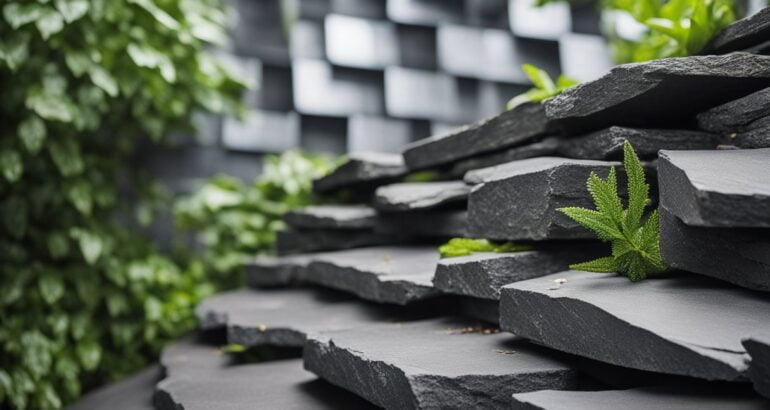
Minimum slope requirements are essential in roofing to ensure proper water runoff and to prevent leaks. Slate, a durable and aesthetically appealing roofing material, is no exception. The minimum slope for slate roofing installation is central to its functionality and longevity. Generally, the lowest pitch recommended for a slate roof is a 4:12 ratio, which translates to 4 inches of vertical rise for every 12 inches of horizontal run. This ratio permits adequate water drainage and reduces the risk of water infiltration that could damage the roof structure or the interior of the building.
To determine the appropriate slate roof pitch for a particular project, factors like the length of the roof slope and the size and lap of the slates are taken into consideration. Building codes and the recommendations of the National Slate Association or other relevant bodies must be adhered to, as these guidelines ensure the roof performs as expected. It is important that the minimum slope for slate roofing is observed to maintain the integrity and functionality of the roofing system.
Basics of Slate Roofing

Slate roofing combines durability with a unique aesthetic appeal, making it a premium roofing material. Optimal construction details are essential for the performance and longevity of a slate roof.
Characteristics of Slate
Slate is a natural stone that is renowned for its strength and longevity. It comes in varying sizes, typically ranging from 6″x10″ to 14″x24″, and its thickness can affect the overall weight of the roofing. The standard thickness for slate tiles is about 3/16″, with a square of this standard thickness slate weighing approximately 600-700 pounds.
Slate Roof Advantages
Slate roofs offer a multitude of advantages, such as:
- Longevity: With proper installation, slate roofs can last over a century.
- Aesthetic: Slate provides a distinctive, elegant appearance.
- Low Water Absorption: It has a low water absorption rate, which makes it resistant to frost damage and breakage due to freezing.
- Fire Resistance: Slate is highly resistant to fire compared to other roofing materials.
In regard to construction details, one must always consider the minimum slope for installation. A slope of 4:12 or above is mandatory for proper installation. On slopes of 6:12 or lower, a minimum headlap of 4 inches is required. Ensuring these construction details can result in a slate roof that is both functional and long-lasting.
Minimum and Maximum Slope Considerations

Proper slope is critical for slate roofing to ensure its long-lasting durability and functionality. The slope of a roof dictates how effectively it sheds water and impacts its aesthetic appeal.
Determining Minimum Slope for Slate Roofing Installation
The minimum slope for a slate roof typically starts at a 20-degree angle. This specification ensures adequate water runoff, which is essential for preventing moisture infiltration. The National House Building Council (NHBC) suggests a minimum pitch of 20 degrees with appropriate headlap adjustments. Not adhering to this standard can lead to compromised roofing performance and longevity.
Maximum Slope Viability
While there’s no universally fixed maximum pitch for a slate roof, structural integrity, and safety during installation become concerns at steeper angles. Most slate roofs are practical and function well up to a steepness of 45 degrees, beyond which special installation considerations may be needed to ensure the slate remains securely in place.
Installation Techniques and Tips
Successfully installing a slate roof hinges on precision and proper technique, with particular attention to the minimum roof slope.
Tools and Materials
The installer will need various tools and materials for the job:
- Slate Hammer: For trimming and cutting slate.
- Roofing Nails: Long-lasting nails, such as copper or stainless steel.
- Slate Cutter: To shape slates with minimal waste.
- Easy Slate: These are tools or materials designed to facilitate the installation and improve the underlay grip to the slates.
- Chalk Line: Essential for creating layout lines.
- Ladder or Scaffolding: Safe access to the roof.
Slope Measurement Methods
Measuring the slope is critical before starting installation:
- Visual Inspection: Estimation of the slope based on the roof’s design.
- Use of Inclinometer: A more accurate tool for measuring roof angles.
- Slate Roof Pitch Calculator: They can provide immediate calculations of slope suitability based on input dimensions and are accessible online.
It is crucial for the longevity and performance of a slate roof that the minimum slope is adhered to, typically at least a 4:12 ratio, though specific cases may vary. An appropriate slope ensures that water sheds effectively, preventing leaks and prolonging the roof’s life.
Freddy & Son – Best Slate Roofing Installers in Virginia
For the best slate roof installation in Virginia, choose Freddy & Son. They’re experts in making homes look stunning and sturdy with genuine slate roofing. With over 10 years of experience, their team ensures your roof meets high standards and follows all rules. They’re known for their top-notch work and have earned recognition for their excellence in the roofing industry. If you want a beautiful and durable slate roof for your home, Freddy & Son – Roofing Contractors in Virginia are the ones to call.



